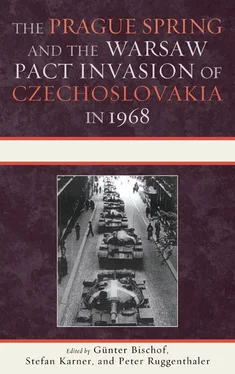For the PCF, it was easier to find a culprit outside the mechanisms of neocapitalism: Gaullist charisma. The party’s political bureau recognized that the “grand illusions [of welfare inspired by the president] are the greatest obstacle against the unity of the working class.” The PCF’s persistent ouvriérisme not only alienated potential new social strata; it also weakened the very countercultural society the party was striving to maintain among workers, for, indeed, sectors of increasingly affluent workers did not resist the lure of consumerism. As it has been widely recognized, “the traditional, closed world of the worker, which reinforced an identification with the PCF… slowly dissolved.” The new urban landscape, with its anonymous high-rises, privileging “family, personal space, and ‘modern’ communications (principally television)—in a word ‘individualism’—usurped the place of the locality and the party.” As in the United States, people gradually began to shed their workers’ identity, aspiring to a middle class status and comforts. 12
A persistent anti-U.S. prejudice was matched by a renewed faith in Soviet progress, nurtured by the dream of plenty revived by Khrushchev. In the late 1950s, the Soviet leader launched the slogan “‘catch up and surpass America’ as the cornerstone of the construction of communism over the next twenty years.” His predecessors had never allowed communism to be judged other than through its own criteria. Now the peoples of the Soviet Union and Eastern Europe began to compare their standards of living with those of the Americans. 13Did Khrushchev’s revolutionary romanticism affect the French and Italian Communists? Maybe not on nuclear issues, given the two parties’ continued reliance on pacifism to extend their popular appeal, but on the competition with capitalism, most evidence shows that it did. The press from both parties kept repeating like a mantra that, as Pierre Lefranc put it, “we are approaching the moment of truth, when the first Socialist country is going to catch up and overtake the first capitalist country.” New discoveries in the field of automation also revived the contrast between the job-killing machines in the capitalist West versus technology placed at the workers’ service in the Soviet dreamland. In a system not subordinate to the law of profit, the two parties’ economic experts argued, unemployment was virtually impossible, and automated factories brought material and cultural improvement to the masses. Soviet workers benefited from higher productivity, growing salaries, and opportunities in technical education. Even the Vatican’s 1961 encyclical Mater et Magistra , calling for greater social welfare and deploring the arms race and economic disparities among nations, had mainly one significance for both parties: it was a serendipitous admission of capitalism’s shortcomings and an implied concession to the superiority of the Soviet system. 14
By the end of the decade, socialism with a human face at first appeared to be the true fulfillment of the Gramscian dream of cultural hegemony, of the organic intellectual truly undistinguished from the forces of the proletariat, truly bringing about the classless society. It could also be a special validation of the intellectual correctness of the Italian vision of socialism, not just the Italian path to socialism. So admission of failure in the Soviet camp, in this vision, would actually restore the credibility of Western communism and its mixture of parliamentary and insurrectionary tactics.
But both the French and Italian Communist parties miscalculated not only on the Soviet side, thinking that socialism could be reformed from above, but also on the side of protest at home, failing to comprehend the antiestablishment spirit from below. At the time of the events in Hungary in 1956, PCF and PCI leaders had come across as defenders of authoritarianism. In 1968, they simply looked old, a group quickly aging, in every sense, just like Charles de Gaulle or the old guard Christian Democrats. Youthful rebels and the new extraparliamentarian Left saw the PCF as a bureaucratized apparatus that compromised with the Soviet Union, which, in turn, had compromised with de Gaulle; in the case of the PCI, its own left wing disconcerted the new rebels once it began its slow approach to Catholic groups, though not the Catholic establishment.
THE PCF, PCI, AND THE SOVIET SCRIPT
Significant differences divided the two parties, and they have been amply examined and reassessed. For the sake of brevity, the most significant difference is summarized in historian Marc Lazar’s quip that the more thoroughly Bolshevized PCF followed the Soviet script in allegro vivace whereas the PCI did it in allegro moderato . 15Although recent research has revealed that the Italian Communists maintained as strong an intimacy with Moscow as their French comrades, at least until 1956, it remains undisputable that the PCI’s reference to Stalin was less obsessive than that of the PCF. 16To some extent, this difference reflected the respective political traditions of Italy and France. In the former, where the state’s weakness remained endemic, “partitocracy,” or rule by parties, undermined a strong executive—with the notable exception of the discredited fascist years—and also favored the search for constant mediation and even “transformism”; the Communists reinforced their tendency to assimilate and compromise. 17In the latter, where the state was strong and centralized and societal conflict more inscribed in its evolution and even enshrined in the French Revolution, unassailable ideological faith could be more easily conflated with national identity. 18The PCI’s long experience as a clandestine group under fascism also kept its cadres alert to the danger of being ostracized again. 19
The prominence of intellectuals was notable in both parties. Nevertheless, the PCI fielded a more highly educated leadership than the PCF. As historian Stephen Gundle has noted, the PCI’s “well-directed strategy aimed at achieving a hegemonic position within national thought and culture was virtually without precedent in the history of the European workingclass movement.” The French Communist leaders brandished their modest backgrounds as badges of honor, but also retained less control of fellowtraveling intellectuals. This was potentially and ironically one of the PCF’s major weaknesses. 20
ESTABLISHMENT VERSUS ANTIESTABLISHMENT
By the mid-1960s, after almost twenty years in opposition, both parties were trying to form alternative government coalitions. The PCF did so by relaunching the cooperation of the Left with the Socialists, starting with the presidential elections of 1965. The PCI debated whether it should break the center-left coalition by seeking cooperation with the Socialists or by reaching out to Catholic workers. 21All these tactics required détente at home and an implied accommodation with the rapprochement between the establishment forces in the West and the establishment forces in the Soviet Union. In France, this meant endorsing to a certain extent the efforts of President de Gaulle of using détente to distance himself from Washington, while also drawing a distinction between that effort and a more thorough connection to the East proposed by the Left.
At the same time, both parties tried to co-opt the movements on their Left, endorsing some of their antiestablishment tactics. Paradoxically, that was especially true for the more parliamentarian of the two parties, the PCI. The cooperation between labor and student movements was more intense there because of the rapid, hence problematic, transition to modernity for Italy. In an interview with Rinascita in December 1968, PCI secretary Luigi Longo went as far as arguing that insurrection was an option, especially if youth and labor demonstrations continued to be met with violent repression. 22But both parties’ main efforts were directed at harnessing the antiestablishment forces. When the PCF proposed a government of popular democratic unity following the May 1968 events, it was not acting in a revolutionary way, but was channeling the revolutionary tide toward the rather limited goal of unseating de Gaulle. 23
Читать дальше












